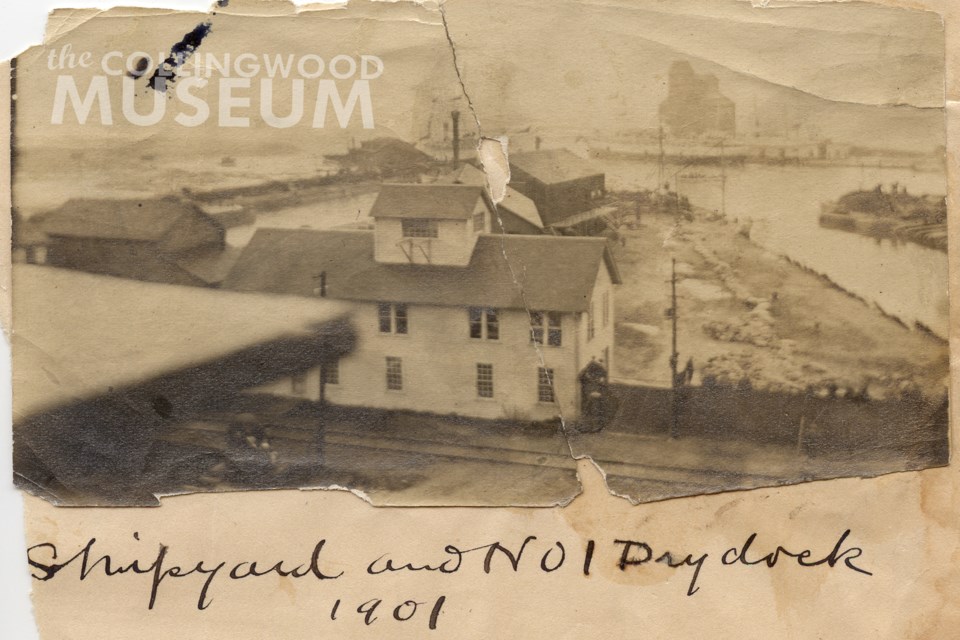Today’s featured photograph showcases a unique view of Collingwood’s early shipyard from 1901, including a flooded No. 1 Dry Dock (right) and the Hurontario Street launching basin (left).
The No. 1 Dry Dock was constructed in 1883 and marked the official beginning of what would become the Collingwood Shipyards.
The earliest known evidence of the Hurontario Street launching basin (or “slip”) appears on an 1899 map of Collingwood’s waterfront held in the Simcoe County Archives. The slip was given this name because it extends beyond the northern point of Hurontario Street. Until viewing this map, Museum staff did not realize that the No. 1 Dry Dock is directly in line with St. Paul Street, which explains the triangular landmass between the rectangular inlets.
The white wooden building in the photograph’s foreground is shrouded in mystery, especially when noting its east-west orientation.
Another photograph in the Museum’s collection shows a very similar, albeit more decorative, building in a north-south orientation (Photograph 2). In this second photograph, the Grand Trunk Railway Elevator is visible behind the two-storey structure. Moreover, the stocks to the left of the building run parallel to the Hurontario Street slip. If this is the same building, it must have been repositioned.
If you have any information that may help to solve the mystery of this early building, please contact Collingwood Museum staff.
Today’s photograph was inspired by Huron Institute numbers 128 and 129, described by David Williams as “Shipbuilding, Collingwood, 1901.” No photographs bearing these numbers could be found at the time of publication.
Remember This is a weekly series of historic photographs submitted by the Collingwood Museum to CollingwoodToday.ca. These photographs were originally collected and documented by the Huron Institute in an historical catalogue entitled Huron Institute Paper and Records: Volume III. Much of Collingwood’s early history has been preserved due to the dedication and foresight of the early museum’s founders, namely its secretary-curator David Williams, upon its establishment in 1904.
